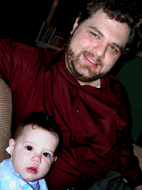Lost in the Cosmos: The Last Self-Help Book
Thursday, April 2nd, 2009Part of an occasional series of less-well-known books I love.
Lost in the Cosmos: The Last Self-Help Book by Walker Percy
Despite the subtitle, Lost in the Cosmos is only a mock self-help book. It doesn’t pretend to have answers, but instead has many questions, a multi-chapter diversion about the theory of symbols and language, and two science-fiction short stories.
In a recent issue of a home-and-garden magazine, an article listed fifty ways to make a coffee table.
One table was made of an old transom of stained glass supported by an antique brass chandelier cut ingeniously to make the legs.
Another was a cypress stump, waxed and highly polished.
Another was a big spool used for telephone cable set on end.
Another was a lobster trap.
Another was a Coca-Cola sign propped on Coke crates.
Another was a stone slab from an old morgue, the blood runnel used as an ash tray.
Another was a hayloft door set on cut-down sawhorses.
Another was the hatch of a sailboat mounted on halves of ships’ wheels.
Another was a cobbler’s bench.Not a single one was a table designed as such, that is, a horizontal member with four legs.
Question: Why was not a single table designed as such rather than being a non-table doing duty as a table?
(a) Because people have gotten tired of ordinary tables.
(b) Because the fifty non-tables converted to use as tables make good conversation pieces.
(c) Because it is a chance to make use of valuable odds and ends which would otherwise gather dust in the attic.
(d) Because the self in the twentieth century is a voracious nought which expands like the feeding vacuole of an amoeba seeking to nourish and inform its own nothingness by ingesting new objects in the world but, like a vacuole, only succeeds in emptying them out.(Check One)
The first half of the story is questions such as this, interspersed with hypothetical scenarios. Each question focuses on some aspect of who we are, both individually and collectively. Then, in an odd but effective twist, the book veers off into a chapter about “semiotics”: how we use symbols to communicate, how these symbols gain meaning, and how we use symbols differently than any other creature.
The end of Lost in the Cosmos contains two science-fiction short stories. The first story is particularly compelling because it deals with the fall of man: that man gained consciousness of himself and soon after was destroyed by that very consciousness. The alien race, on the other hand, has preternatural consciousness: they have avoided “the malformations of self consciousness”. The aliens refuse to let man land, because they are fallen and have not asked for help. The state of fallen mankind described in this story is different but has striking parallels to the story of the fall of Adam.
For a book which bounces quickly through language, transcendence, evolution, boredom, and sexuality, and pretends to classify everyone’s self-understanding in 16 categories, Lost in the Cosmos is a surprisingly coherent and enjoyable story. It is sometimes aggravating, especially when none of the multiple-choice answers comes close to your answer, but it will always provoke thought about how man knows himself, and how you personally know yourself.
Available at amazon.com.
If you’ve read Lost in the Cosmos and want to dive deeper, Walker Percy wrote a less-fiction on language: The Message in the Bottle: How Queer Man Is, How Queer Language Is, and What One Has to Do with the Other (also available at amazon.com).

